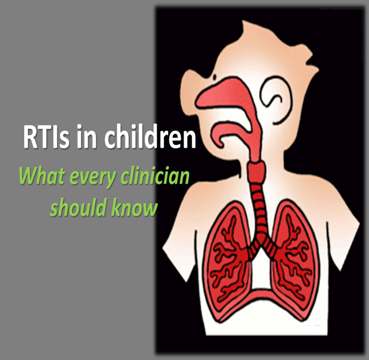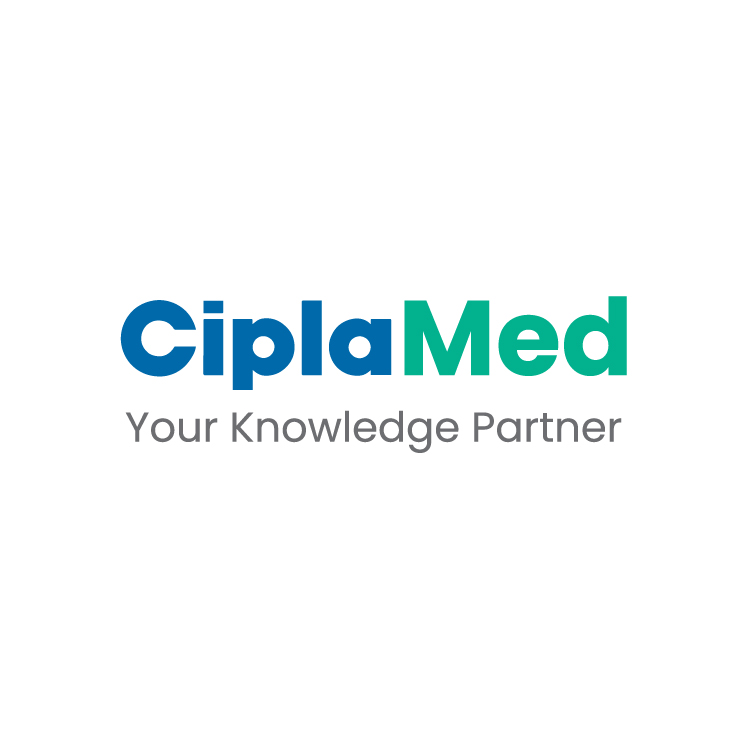AAP 2025: Highlights from Day 2
The RITA-T (Rapid Interactive Screening Test for Autism in Toddlers) Identifies Autism Risk in Pre-schoolers Aged 3-5 years’ Old
Presenter: Roula Choueiri
In this chart review, 250 children aged 5 or younger were evaluated for autism between November 2023 and September 2024. Among 88 pre-schoolers (3–5 years), 67 had complete RITA-T assessments; 80.9% were male. Racial breakdown: 41.2% Black/African American, 22.22% White, 9.5% Hispanic, 8% Asian, 8% multiracial, and 11% unknown. Mean age was 43.2 months (range 36–59), average RITA-T score 19.6 (range 11–27). Of 67, 63 were diagnosed with autism; 48 high-risk, 14 moderate-risk, only one below cut-off. RITA-T demonstrated consistent ASD risk detection in pre-schoolers.
The study concludes that the RITA-T reliably identifies autism risk in pre-schoolers aged 3–5 years, with consistent cut-off scores compared to younger children.
Usability and Acceptability of a Digital Tool for Promoting Healthy Infant Feeding and Lifestyle Behaviours: A Mixed-Methods Study
Presenter: Madhumitha Ayyappan
This mixed-methods pilot study evaluated the Feeding, Lifestyle, and Growth (FLAGs) digital tool with 25 parents. It achieved a mean System Usability Scale (SUS) score of 71.3, exceeding the 68 benchmark for acceptable usability in digital health. Parents valued the app for tracking daily infant care, improving understanding of nutritional guidelines, and boosting confidence in managing child nutrition. Reported challenges included user interface issues, complex tracking features, and insufficient content personalization.
Overall, FLAGs demonstrated strong usability and acceptability, showing potential to encourage healthier early childhood habits and contribute to obesity prevention with targeted improvements.
Effectiveness of Standardizing Chest Radiograph Reporting to Reduce Antibiotic Overuse in Pediatric Pneumonia
Presenter: Brandy M. Hoyt
This study involved 12,811 non-complex pediatric patients with lower respiratory tract infections (LRTI). Interventions included standardizing chest X-ray (CXR) impressions, removing the term “pneumonia,” educating on CXR limitations, and referencing an institutional CAP pathway. Antibiotic initiation for inpatient community-acquired pneumonia (CAP) reduced from 34% to 29%, and full antibiotic courses declined from 29% to 25% post-intervention, but these improvements were not sustained, with rates rising to 41% and 36%, respectively.
Outpatient antibiotic prescribing did not decrease. Standard CXR impression use remained high at 79%. Some balancing measures showed small statistically significant changes. The team is investigating causes of recent antibiotic increases to refine interventions.
Incorporation of Screen Time Anticipatory Guidance into Infant and Toddler Well Child Visits
Presenter: Paola Carolina
A quality improvement project aimed to increase documentation of screen time guidance using a smart phrase. Baseline documentation was 0%. Following three Plan-Do-Study-Act (PDSA) cycles—email education, placement of smart phrase signage, and weekly EPIC chat reminders—documentation improved from 0% after cycle 1, to 32% after cycle 2, and finally to 50% after cycle 3. Email education alone had no impact, while physical signage and weekly reminders significantly boosted compliance.
The study demonstrates that combining practical tools with consistent reminders effectively enhances provider documentation of anticipatory screen time guidance.
Quick Reduction of Central line Associated Blood Stream Infections (CLABSIs) in a Pediatric Cardiac Intensive Care Unit
Presenter: Sarah Brandt
In response to an increase in the CLABSI rate in the CTICU from 0.24 per 1000 central line days in 2022 to 1.45 in 2023, multiple proactive interventions were implemented between July 2023 and November 2024, including increased leadership rounds, enhanced cleaning protocols, simulation training, a bare nail policy, environmental checklists, surface testing, parent panels, safety huddles, and CLABSI bingo.
These measures, alongside the existing CLABSI bundle, reduced the infection rate to 0.44 per 1000 central line days in 2024. Compliance with bundle protocols remained high (87% in 2023, 85% in 2024), and surface cleaning compliance was 80%. Sustained reduction requires continued quality improvement and safety culture reinforcement.
A Breath of Fresh Air: A Systematic Approach to Pediatric Pulmonary Hypertension
Presenter: Andrew Corson
A 7-year-old male with non-verbal autism and ventricular septal defect presented with 2 months of ambulation difficulty and orthopnea, initially suspected myocarditis after Rhinovirus infection. Exam showed hepatomegaly and gingival bleeding. Echocardiogram revealed near-systemic right-sided pressures, tricuspid regurgitation velocity of 4.95 m/s (PG 98 mmHg), pulmonary valve insufficiency jet 3.1 m/s (PG 39 mmHg), right ventricular dilation, and right-to-left shunting via PFO. CT angiogram suggested possible distal pulmonary emboli. His condition worsened, requiring intubation, pulmonary hypertension vasodilators, and tPA.
Workup revealed undetectable Vitamin C, prompting IV supplementation. Repeat imaging showed no emboli; cardiac catheterization was normal. He improved and was weaned off vasodilators. This case highlights chronic vitamin C deficiency as a rare pediatric pulmonary hypertension cause.
PRE-PICU: Prehospital Primary Care Risk Factors for Critical Illness in Children
Presenter: Caitlyn H. Hodge
This retrospective cohort study analyzed 45,930 unique patient encounters categorized by index hospitalization disposition: PICU (2.6%), general hospital floors (HOSP, 13.9%), and discharged from the ED (83.5%). Hospital length of stay and disposition differed significantly between PICU and HOSP cohorts. PCP utilization for well-child care (WCC) was significantly linked to hospitalization disposition.
PICU patients were less likely to have completed >75% of WCC before admission (19.8%) compared to HOSP (24.6%) and ED (30.5%) cohorts and more likely to have completed <25% WCC (PICU 8.8%, HOSP 5.5%, ED 5.2%). Similar rates of 51–75% WCC completion were seen across cohorts (~31-33%). Findings support an association between WCC completion and hospitalization level.
Stratifying GI Risks: A Comparative Study of Pediatric TPN by Age Group
Presenter: Saman Aryal
A retrospective cohort study analyzed 133,028 children aged 1–10 years receiving prolonged TPN, divided into 1–5 years (41,922 patients) and 6–10 years (41,922 patients after propensity matching). The younger cohort had significantly lower odds of abnormal liver function tests (OR 0.498), metabolic syndrome (OR 0.238), inflammatory bowel disease (OR 0.390), jaundice (OR 0.615), intestinal dysbiosis (OR 0.858), vomiting (OR 0.602), GERD (OR 0.714), and IBS (OR 0.354) compared to older children (all p < 0.01).
Lower risk in younger children may reflect greater gastrointestinal adaptability, reduced oxidative stress, and immune factors. Findings underscore the importance of age-tailored monitoring and interventions in TPN patients.
Association of Chest Radiograph with Antibiotic Usage in Febrile Infants 2 to 6 Months of Age
Presenter: Rebecca S. Green
A five-centre retrospective cross-sectional study was performed involving previously healthy infants aged 2 to 6 months who presented to the ED with a temperature ≥38.0°C. A total of 21,150 febrile infants were included, of whom 4,212 (19.9%) had a chest x-ray (CXR) performed and 5,603 (26.5%) received antibiotics.
Antibiotic use was found to be associated with CXR (adjusted odds ratio 1.79, 95% confidence interval). Among 2,871 infants with available CXR reports, 120 (4.2%) were classified with definite pneumonia, 328 (11.4%) with probable pneumonia, and 2,423 (84.4%) with no pneumonia. Of the 2,423 infants without pneumonia, 891 (36.7%) were prescribed antibiotics, with 594 (66.7%) lacking evidence of suspected bacterial infection.
It was concluded that most febrile infants aged 2 to 6 months who underwent CXR did not have radiographic pneumonia. Antibiotic use was found to be associated with CXR, even in cases without radiographic pneumonia or suspected bacterial infection.
Preliminary Findings on High-Dose Vitamin D Supplementation and Insulin Resistance in Adolescents with Obesity: Randomized Controlled Trial
Presenter: Jessie Nallely Zurita-Cruz
This randomized controlled trial involved 20 adolescents with obesity and vitamin D (VD) deficiency (<30 ng/mL), randomized to 4000 IU/day or 1000 IU/day cholecalciferol for six months. Post-intervention, 80% of the 4000 IU group achieved VD levels >30 ng/mL versus 10% in the 1000 IU group. The 4000 IU group showed a significantly greater increase in VD levels (23.5 vs. 4.2 ng/mL, p<0.001), a trend toward reduced body fat (-0.09% vs. +1.24%, p=0.07), and lower HOMA-IR (-0.09 vs. +0.75, p=0.25) compared to the 1000 IU group.
No significant BMI Z-score differences were observed. Higher-dose VD supplementation may improve insulin resistance and body fat in obese adolescents.
Antibiotic Management of Pediatric Acute Respiratory Tract Infections when Telemedicine is Integrated into Primary Care
Presenter: Kristin Ray
A retrospective analysis of 2023 data from 843 U.S. pediatric and family medicine sites included 540,607 ARTI episodes in children under 18. Using propensity score weighting, telemedicine index visits were less likely to result in antibiotic prescriptions (35% vs. 47%) and more likely to receive viral diagnoses (66% vs. 56%) than in-person visits. Guideline-concordant antibiotic management rates were similar between telemedicine (86%) and in-person visits (86%).
Telemedicine visits had higher 14-day follow-up rates (14% vs. 9%) but no difference in subsequent antibiotic use. Findings support high-quality antibiotic management via telemedicine integrated into primary care, highlighting the need to consider telemedicine model variations for future care integration.
Online Parent Training Programs for Children with ADHD: A Meta-Analysis of Randomized Controlled Trials
Presenter: Therdpong Thongseiratch
A meta-analysis of 12 RCTs including 1,183 parent–child dyads (2010–2024) evaluated online parent training (PT) for children with ADHD. Most studies had low-to-moderate bias risk, with no significant publication bias. Online PT yielded moderate, significant reductions in ADHD symptom severity (Hedges’ g = 0.51, 95% CI: 0.33–0.69, p<.001) and improvements in parenting practices (Hedges’ g = 0.47, p<.001). Intervention effects were consistent (I²=26%).
Programs with clinician feedback or peer support produced slightly larger effects than self-guided ones. Future research should explore sustaining gains, cultural adaptations, and optimal components for maximizing reach and impact.
American Academy of Paediatrics National Conference & Exhibition 2025 (AAP 2025), 26-30 September 2025, Denver




